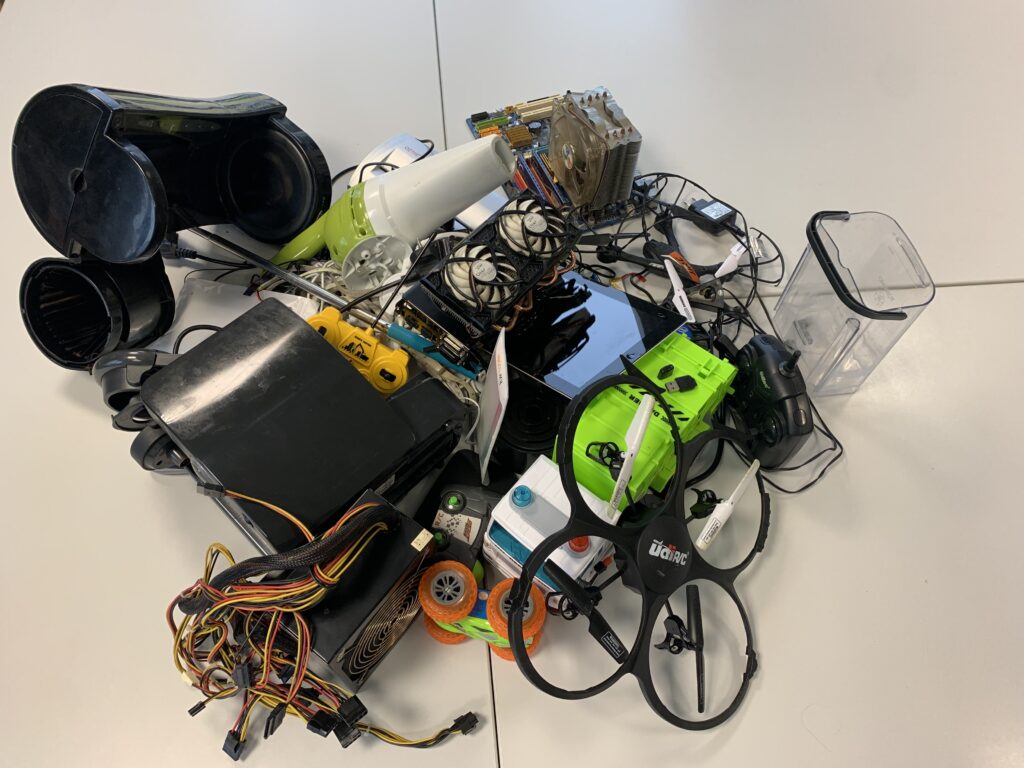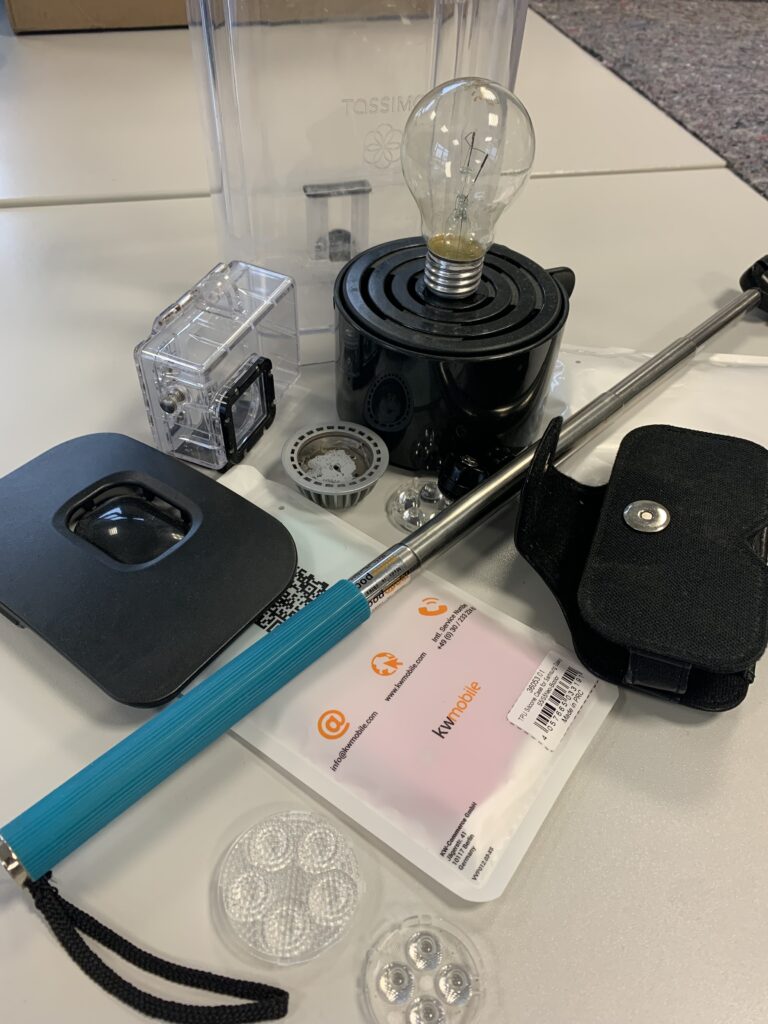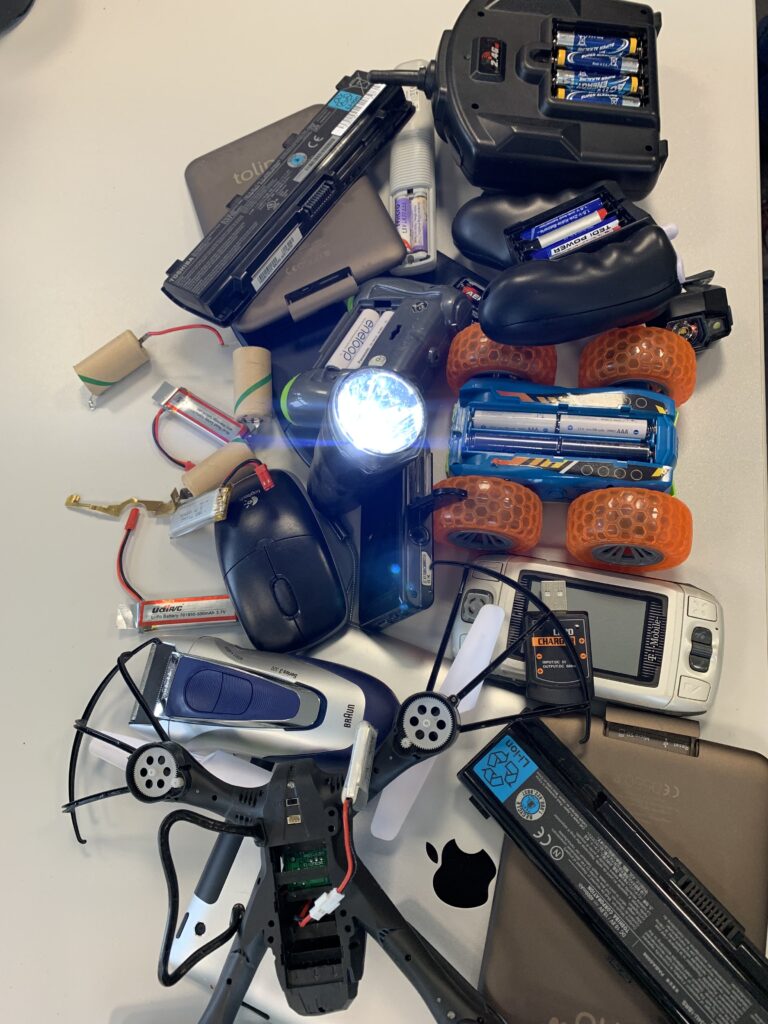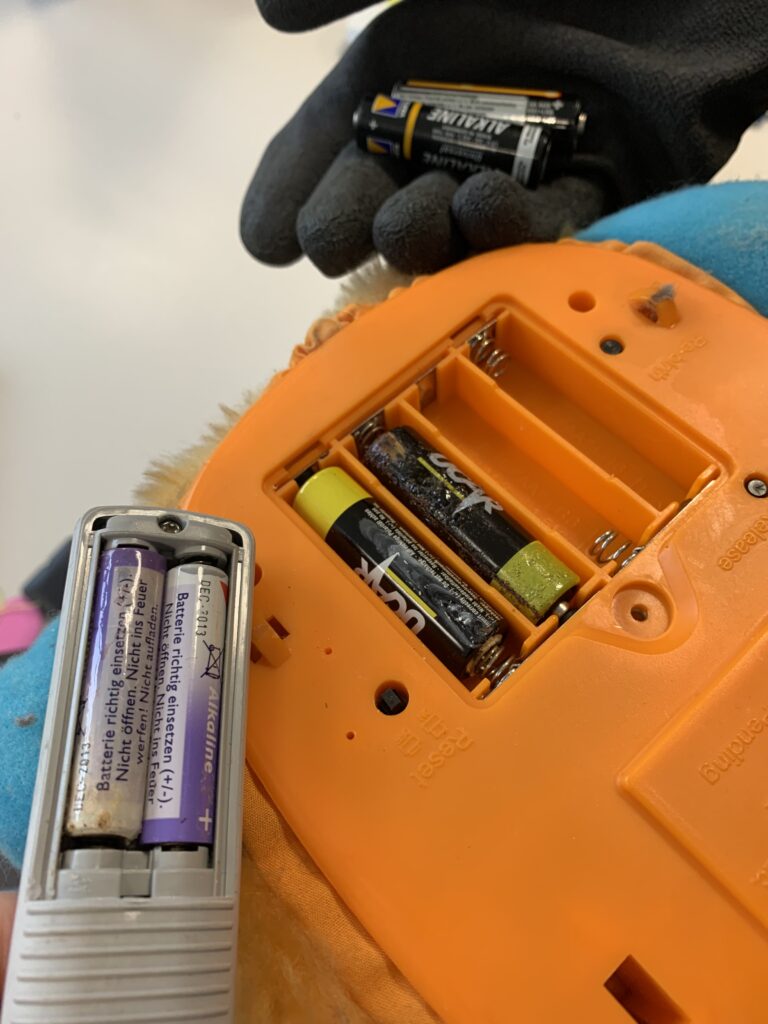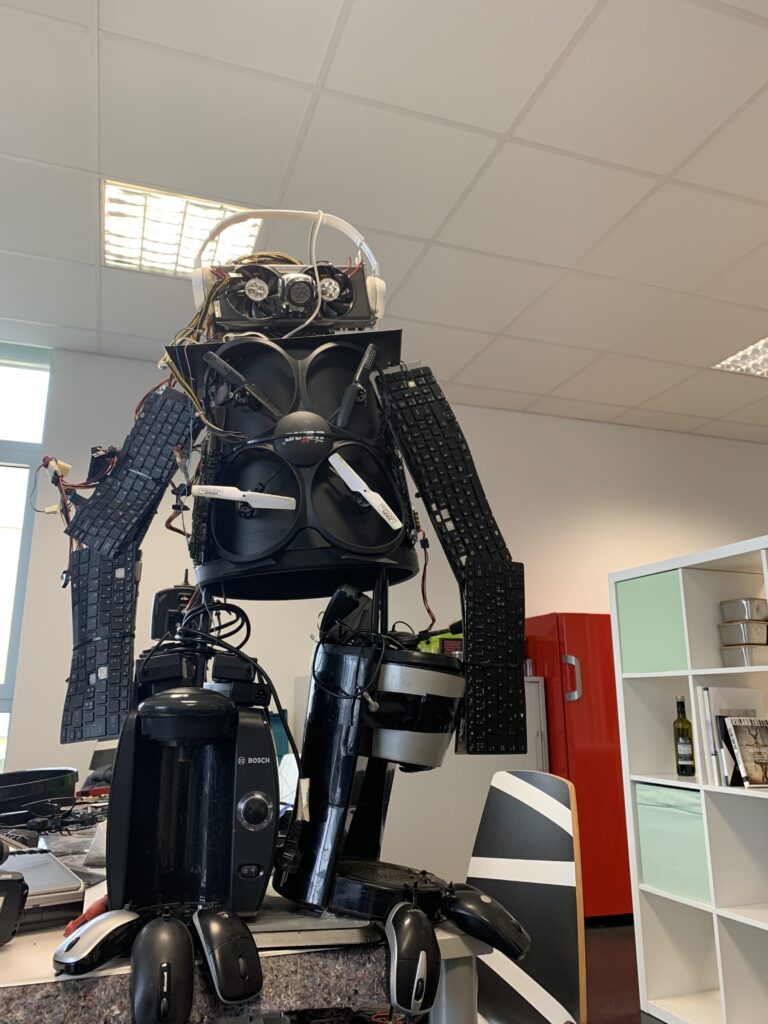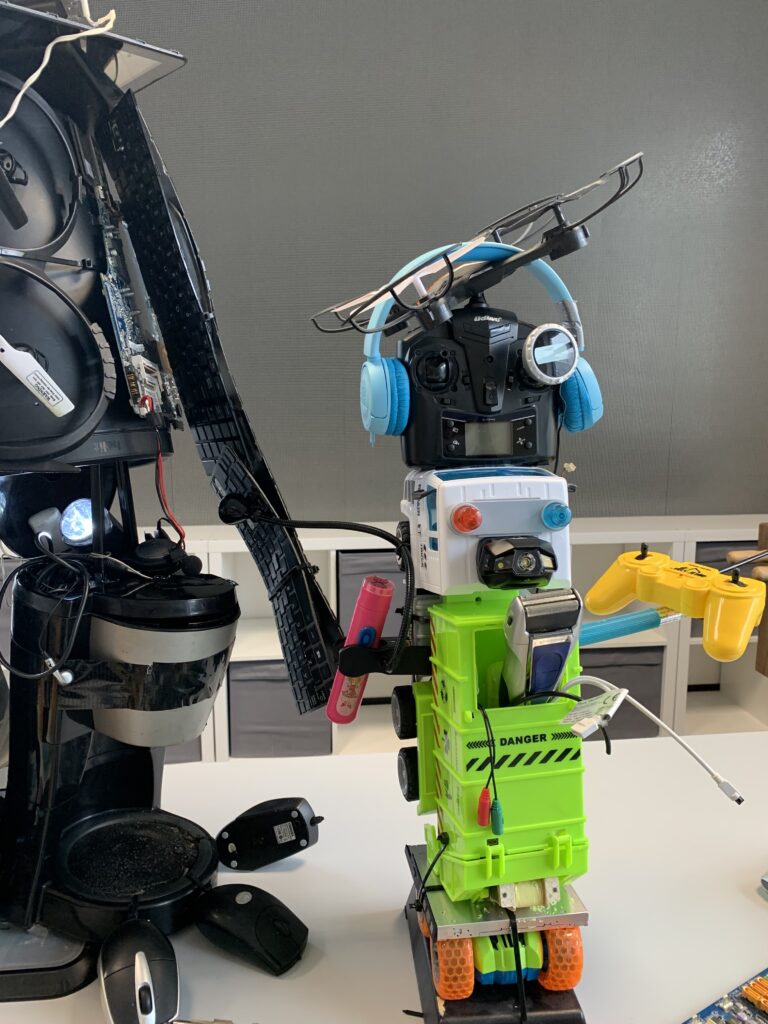On 14.10.2021 was International E-Waste Day. Every year, we join the WEEE Forum’s event here and think of a special action in connection with e-waste. This year, we asked our employees to bring old, worn-out or defective electrical appliances from home. We had not yet revealed what we intend to do with them. Our goal: to build a statue out of all the collected electronic waste. By the way, we don’t want to withhold this from you and present it at our booth at the E-Waste Expo 2021.
Background to the collection campaign: 85 percent of respondents have old electrical appliances at home
Last month, the time had finally come: We were able to publish our study on the topic of “e-waste disposal in private households”. The study revealed some shocking figures. More than 85 percent of respondents have old electrical appliances at home that they no longer use for a variety of reasons. The reasons why the participants do not dispose of the old appliances are also very variable. All in all, we received more than 30 pages of unbelievable insights, facts and personal feelings of the consumers, which we of course want to share with you. You can read more about the study here.
During the preparation of the study, the desire arose in us to further sensitize our employees to the topic of electronic waste and its disposal. This is how we came up with the idea of building a statue together from the old electrical appliances that are lying around at home.
Well? What do we have here?
Little by little, more and more electronic waste was collected over the two weeks. From smartphones, tablets, notebooks, to electrical children’s toys, drones, flashlights, computer mice, coffee machines, power supplies and much more. In a way, we were all shocked at how much e-waste was coming together.
On International E-Waste Day, we sorted through the amount and made some exciting discoveries. Among the e-waste, there was a lot that does not count as e-waste. For example, the cover for an action camera, a selfie stick without electronic components and a light bulb. So we sorted these items away for the time being.
Now it got interesting: How many batteries are in the pile and therefore stored somewhere at home by our employees? Again, almost every second battery-operated device (such as remote controls or the children’s toys) still contained a rechargeable or a battery. Many of them had already burst/leaked. As a result, we also banished these hazards and collected and disposed of the batteries/rechargeable batteries properly. Why batteries or rechargeable batteries can be a great danger to people and the environment, you can read in this exciting news article.
Probably the most bizarre e-waste was an electric children’s toy from the 90s. Fun Fact: With fresh batteries it even still worked!
Then it was time to build the e-waste statue
Now we started with the most exciting part: the construction of our e-waste statue. With hot glue guns, cordless screwdrivers, adhesive tape and especially a lot of teamwork and creativity, we assembled the body parts of our robot piece by piece.
Legs were made from coffee machines, toes from computer mice, an upper body from a drone and many electronic scrap parts, arms from keyboards, and so on. In the end, the meter-high statue stood before us and we were speechless. Despite the amount of used equipment in the big statue, the rest was easily enough for another one.
What a cool team day and the result is something to be proud of, isn’t it? We would like to thank the WEEE Forum for always putting on International E-Waste Day. By the way, more information about what we do and why e-waste is our passion can be found at here.
